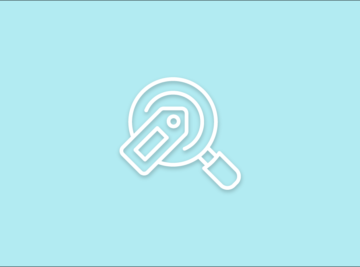You probably already know what student personas are and why they’re important to your marketing efforts. Now it’s time to start researching and creating your persona.
But simply filling in your student persona template with what you think your audience is like isn’t enough.
In order to create accurate student personas that drive your inbound marketing efforts, you should ideally be interviewing your current or past students so that you can learn firsthand what their student journey looked like.
While there are many different ways to conduct persona research, the best approach should include a blend of different research techniques, including utilizing your existing data, perusing relevant resources, and, perhaps most importantly, interviewing those who have already been through the process.
In this interview guide, we’ve compiled a list of 40 questions enrollment marketers should be asking during their student persona interviews. We also offer advice about who you should consider interviewing, and some tips for preparing so that you can get the most out of your next student persona interview.
Free Toolkit – Create Student Personas For Your School
Who Should You Interview?
Ideally, you should aim to interview at least a few students who are already enrolled or who have recently graduated from your institution. If you are tasked with creating a persona for a particular program at a college or university, it can even be helpful to interview the dedicated product or marketing manager for that program.
For K-12 schools or programs which work with younger students, interviewing parents or guardians of your current or past students will often be preferable, as they are the key decision-makers in most situations.
It’s also worth mentioning that you can learn a lot about your ideal student by interviewing someone who ultimately decided against enrolling in your institution. Speaking to someone who chose a different path can help you learn about the common objections to your school or program and brainstorm ways to address them.
When in doubt, make sure you involve:
- Multiple current and former students
- Multiple students who considered your school but did not attend
- Marketers, enrollment officers, admissions counselors, and anyone who interacts with students during the application process
- Program managers (for universities/colleges)
Student Persona Interview Questions
Once you’ve settled on who you’ll be interviewing, you can start to plan out the contents of your interview. The main types of questions you’ll want to ask should over demographics, goals, primary interfaces, change drivers, and challenges and objections.
Demographics
You’ll want to ask questions about their age, location, education, personality, and family to better understand the different aspects that make this person who they are.
Especially in higher education, these questions will shed light on what stage of life your persona is in and how that might impact their journey, what sort of educational background they have, and so on.
Here are some demographics-focused questions you may want to ask:
- How old are you?
- Where are you from? Where do you live now?
- What is your educational background like?
- What is your current job title?
- What is your family like? Do you have children or are you a caretaker?
- What do you like to do in your free time?
- How would someone close to you describe your personality? Are you career-focused or family-oriented?
You might be surprised by the insights you can glean from such simple questions. If you find that this persona is a parent who wants to work full-time while earning their degree, for instance, this might indicate that they will find value in content that illustrates the flexibility of your programs or the support that your institution can offer.
On the other hand, you may discover that they are a young aspiring professional who is career-driven and focused on developing the skills they need for the workforce. Either way, life stage is incredibly important to keep in mind when creating student personas for higher education.
In K-12 education, these questions will often apply to the parent of the prospective student, especially for younger grades. Even still, understanding key demographic information about these parents and their children can help shed light on factors that may influence their decision-making process.
Goals
If you are interviewing a prospective student for a college or university, asking about their long term professional goals can also be powerful in identifying your persona’s motivations. Do they want to maximize their salary? Or is it more important to build an impactful career?
The answers to these questions will speak more to their personality and the goals that they hope your institution will help them achieve. Consider asking questions like:
- What are some of your top professional goals?
- Why are these goals important to you?
- What is your dream job title?
- What other job titles might lead up to that position?
- What makes your dream job appealing to you?
- What does that job offer that your previous job did not?
- What are some common challenges that people face in this industry?
- What strategies do they use to overcome those challenges?
For younger students and their parents, asking about short- and long-term goals can also be helpful. For this audience, questions can include:
- What are your long-term educational goals for your child?
- What activities did you want them to be involved in at school?
- What skills did you find most important for your child to develop?
- What qualities were most important to you when looking for a school?
- What areas of study were you and your child most interested in? Why?
These questions can help you reveal the qualities they are looking for in a school that will help them and their children ultimately reach their goals. If attending a great college is a long-term goal, for example, think about the characteristics of your school which support this goal.
Additionally, these answers can bring about some great content ideas. Let’s say you’re marketing a master’s degree in biotechnology and you learn that your ideal student has the goal of becoming a research scientist. Writing a blog post about the process of becoming a research scientist which offers advice on the required education for this career could be very appealing to this persona, and can help guide them towards the decision to pursue a master’s degree like the one your institution offers.
If you find that parents of prospective eighth-graders are focused on developing strong social skills, consider planning your content around the ways that your school fosters these skills.
Primary Interfaces
A person’s primary interfaces are the people who they frequently interact with and who have the most influence on their decision-making process. Also included in this category are any publications or sources of information that they might turn to in order to make a decision.
Are the parents of your preschool students making decisions based on the experiences of their close friends? Are your undergraduate students relying on help from their parents to choose a college? To find out, ask questions like:
- Who are the people whose opinions matter the most to you?
- Who do you turn to for advice when you need it?
- What role did these people play in helping you make this decision?
- Where do you look to find information online?
- What magazines, journals, or newspapers do you read?
- Do you pay attention to any blogs or social media networks?
- Do you belong to any professional or social groups?
Learning about your persona’s primary interfaces is critical to understanding their decision-making process. Figuring out where they get their information and who they turn to for advice is important information to have in your wheelhouse when planning your strategy.
Change Drivers
Here, your questions should be focused on identifying when and how the persona knew that they needed to make a change and began considering schools.
For K-12 parents, this might be when they realized that they were no longer happy with the school their child was previously enrolled in and began researching other options. In higher education, this could be a lack of career progression that caused the student to want to develop their skills in order to get a better job.
Questions for K-12 parents and students include:
- At what point did you know what you wanted to change schools?
- What made you realize that you were dissatisfied with your previous school?
- What qualities of your previous school did you dislike?
At the higher education level, consider questions like:
- What changes in your personal life, workplace, or industry made you realize you wanted to continue your education?
- At what point in time did you come to this realization?
- If you transferred from a different institution, what led you to make this decision?
These questions will help you pinpoint the beginning of the student journey and further understand what motivates your persona.
Objections and Challenges
Next, you will want to investigate your persona’s challenges and objections. These answers will help you get to the bottom of your persona’s key pain points which your content strategy should help them overcome.
Consider the personal or professional challenges or trends that might discourage or prevent them from pursuing a path towards achieving the goals you’ve outlined above. Here are some questions to ask to uncover your persona’s challenges and objections:
- What are some of the main factors that would prevent you from choosing a school or pursuing higher education?
- Were finances a major concern for you when you made your decision?
- Were you concerned about time or your ability to balance school with other commitments?
- What options were available to you to overcome these challenges?
Although it might be difficult to consider the fact that your school or program isn’t perfect, you can also learn a lot by asking about the qualities or experiences that the persona disliked:
- What was your least favorite part of our school? Why?
- What do you wish you knew about our school before you made your decision?
- How could your experience at our school have been made better?
Taking a student-focused approach and planning your content in a way that helps your persona overcome these challenges or ease any reservations you might have can be the difference in creating content that establishes trust and ultimately converts prospects into applicants.
Preparing for an Effective Student Persona Interview
To get the most out of your next student persona interview, you should spend a little extra time preparing for the discussion so you can be sure that you cover all of your bases. Here are a few tips to help you prepare:
- Do your research before you do your research: This might sound counterintuitive, but going into the conversation with some background knowledge can go a long way. Are there specific qualities of your program that could have influenced the student’s decision-making process? Are there certain industry trends that might have come into play? Lay the groundwork for your discussion in advance so you can be sure you touch on these key points.
- Provide the necessary context: When reaching out to schedule your student persona interview, give your interviewee the necessary context they need. Explain why you are conducting an interview, what you hope to learn from it, what you’ll do with their responses, how you’ll conduct the interview, and so on.
- Send your questions ahead of time: In addition to clarifying why you’re conducting an interview, it can also be beneficial to provide your interviewee with a list of questions you plan to ask ahead of time. This doesn’t need to be an exhaustive list, but it should get your interviewee thinking ahead of time so that they can be prepared for the discussion as well.
With the right preparation and expectations for student persona interviews, you can effectively learn about your ideal student so you can structure your inbound strategy around their needs. The insights you can gather from this process can reveal more than you might think and help you nurture more prospects towards becoming enrolled students.










